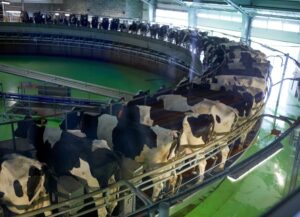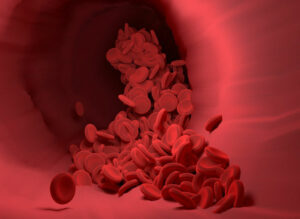Mercedes Gonzalez & Nuria Garcia
Pasture-based milk production systems are seasonal, requiring cows to become pregnant every 365 days to take advantage of fresh grass as an economic feed source. Grazing cows are more vulnerable to negative energy balance than cows in intensive systems since they are more likely to suffer nutritional imbalances, resulting in worse reproductive performance and lower farm profitability.
To strengthen economic sustainability, peaks of maximum grass growth during spring must be aligned with the highest animal requirements. The short time period (about 85 days) during which cows in seasonal grazing systems must conceive to maintain reproductive efficiency, leaves little room for delays, and therefore postpartum pathologies should be minimized.
A physiological inflammation of uterine tissues post-calving precedes uterine involution. The risk of endometritis increases starting at 21 days post-calving in the presence of other factors such as negative energy balance, dystocia, twinning, stillbirths, retained placenta, or an inclined vulvar angle together with early uterine infections.
Its consequences are important, causing reduced conception and pregnancy rates, delayed uterine involution, increased culling rates, treatment expenses, and severe economic losses. The immune response of the cow and the interaction with pathogens present in the uterine environment are essential to prevent it.
Cows suffering from longer and more intense inflammation experience changes in the microbial population of their reproductive tract the first few days after calving, with a less diverse population than that of their healthy herdmates.
The presence of purulent vaginal discharge (PVD) after 21 days post-calving is an objective parameter to assess the presence and severity of endometritis in farms. It was previously thought that PVD was the result of draining purulent material from the uterus into the vagina; it is now considered however to reflect the inflammation of the lower reproductive tract, including the cervix and vagina.
It is for this reason that the term “purulent vaginal discharge” is recommended instead of “clinical endometritis”, providing a more accurate description of the presence of reproductive tract disease.
The assessment of PVD is performed by examining the vaginal mucus using a Metricheck device, a vaginoscope, or the gloved hand using Williams’ visual scoring system based on the number of pus observed:
- 0 (clear mucus)
- 1 (mucopurulent material stains)
- 2 (<50% purulent material in 50 ml exudate)
- 3 (50% purulent material in 50 ml exudate)
No research had been conducted so far to determine the proclivity of high-production grazing cows to develop PVD, or how it could affect their fertility. A recent study (Ryan et al. 2020) assessed the prevalence of PVD at 21 days postpartum, its relationship between production in the previous lactation and the tendency to develop PVD, and the relationship between production in the previous lactation and reproductive efficiency. The nutritional management of the cows in the study consisted of pasture supplemented with concentrate during lactation.
The total prevalence of PVD on the 5 farms evaluated in this study was 60% (range 38% to 87%); a more recent study reported that the prevalence of PVD on dairy farms was 54%. Scores for PVD were as follows: 40% of cows scored 0 (healthy), 27% scored 1, 15% scored 2, and 18% scored 3.
High production during the previous lactation is a risk factor for presenting purulent vaginal discharge
No significant differences were found in milk production or composition between cows with and without PVD. Culling rates were slightly higher in the group of cows with PVD, although the difference was not statistically significant.
This study identified high production during the previous lactation (above 6,571 kg) as a risk factor for presenting PVD in grazing cows post-calving. Those cows with PVD showed 3 times less chance of conception, 2 times more likely to require multiple services per conception and 2 times more likelihood of conception failure before 100 days post-calving. They also had a birth to conception period 9 days longer than healthy cows.
In addition, cows with PVD and high production in the previous lactation were 5 times more likely to fail to conceive, and more than twice as likely to require more than one service per conception and fail to retain the pregnancy before 100 days post-calving.
In conclusion, the development of PVD had a negative impact on the fertility of grazing cows, particularly those with high production in the previous lactation. The effects of uterine pathologies on subsequent poor reproductive results reflects the importance of making an accurate diagnosis to take early preventive and corrective measures.
Reference
Nicholas Ryan, Kieran G. Meade, Erin J. Williams, Cliona O’Farrelly, Jim Grant, Alexander C. O. Evans, Marijke E. Beltman. Purulent vaginal discharge diagnosed in pasture-based Holstein-Friesian cows at 21 days postpartum is influenced by previous lactation milk yield and results in diminished fertility, J Dairy Sci. 2020 Ene; 103(1):666-675.
© 2020 Dairy Knowledge Center. All Rights Reserved.









